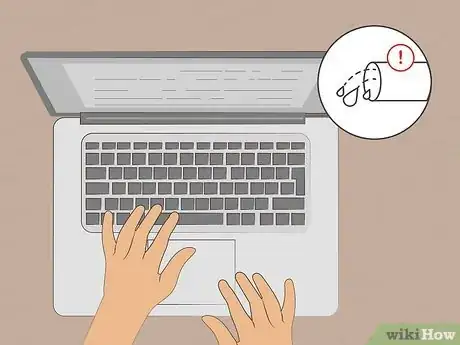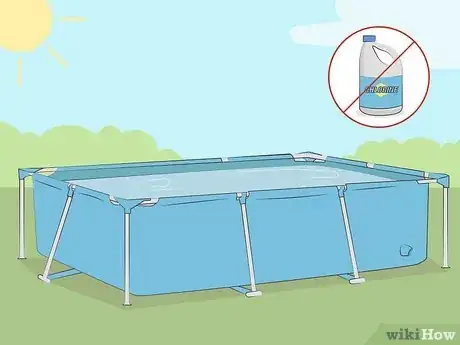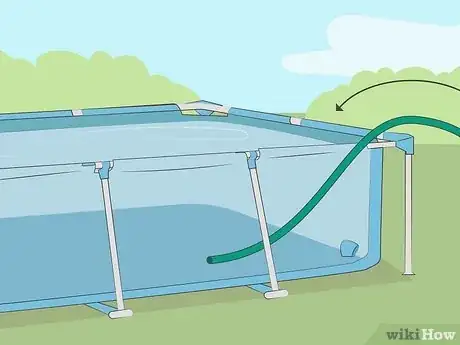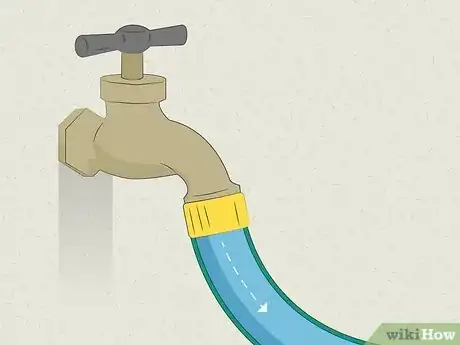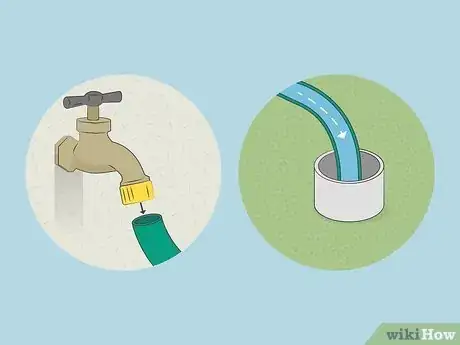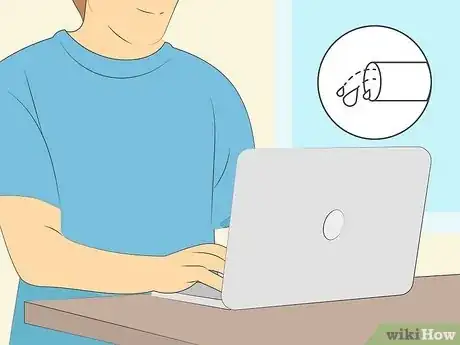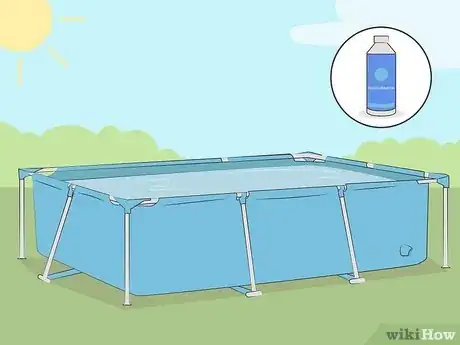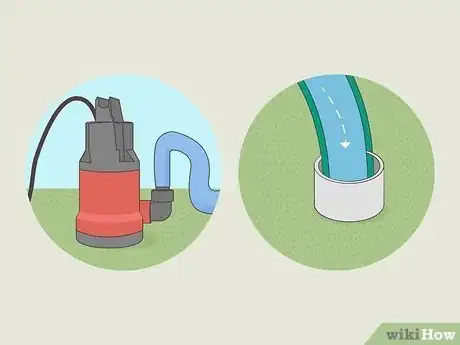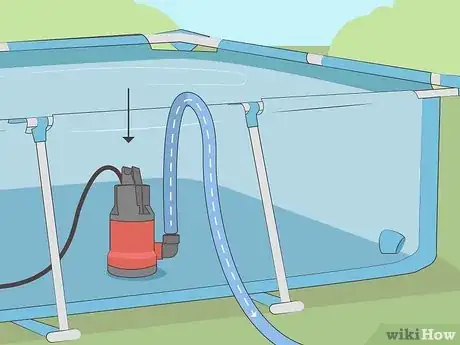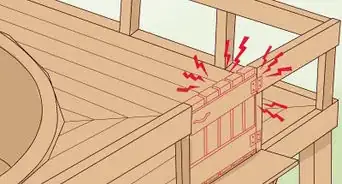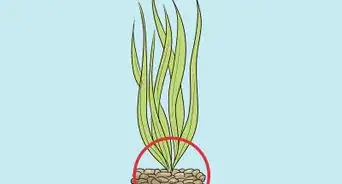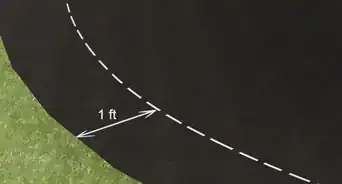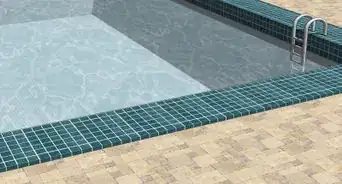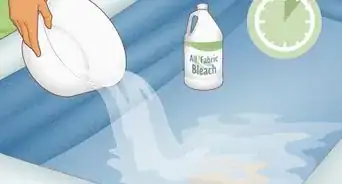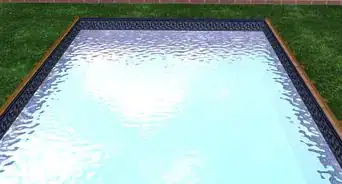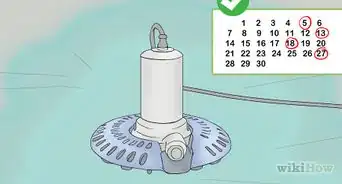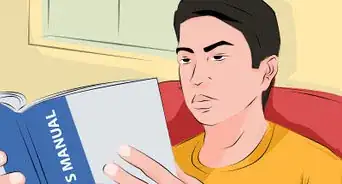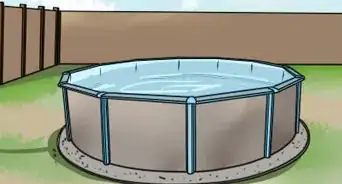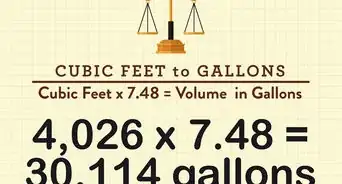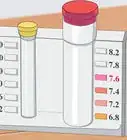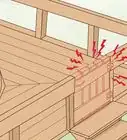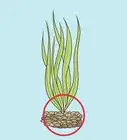This article was co-authored by wikiHow staff writer, Hunter Rising. Hunter Rising is a wikiHow Staff Writer based in Los Angeles. He has more than three years of experience writing for and working with wikiHow. Hunter holds a BFA in Entertainment Design from the University of Wisconsin - Stout and a Minor in English Writing.
There are 13 references cited in this article, which can be found at the bottom of the page.
This article has been viewed 18,048 times.
Learn more...
Whether you’re cleaning and repairing an above-ground pool or just putting it away for the season, it’s time to drain the water. Since there's a lot of pool water to get rid of, it's important that you drain the water properly to avoid any damage or flooding. Luckily, there are easy ways to drain a pool within a few hours on your own. Keep reading for the best ways you can drain your above-ground pool with or without a pump.
Steps
Draining an Above-Ground Pool with a Hose
-
1Check with your city if there are pool drainage restrictions. The amount of pool water and the chemical it contains can negatively affect the environment. Look up your city’s ordinances online to see if they have specific rules for where you can safely drain your pool.[1]
- The safest and most preferred option is draining into the sanitary sewer line. You’ll usually have a cleanout pipe for the sewer line on your property.
- You can also drain the pool water onto grass or landscaping to water your plants.
- You may be able to drain your pool directly into a storm sewer drain.
-
2Dechlorinate your pool. To dechlorinate your pool naturally, stop adding chlorine to your pool and let it sit in the sun for about 5–10 days. To do it more quickly, you can pour dechlorinator into your pool following the usage instructions on the package. Test your pool water to make sure the chlorine level is below 0.5 ppm.[2]Advertisement
-
3Submerge one end of a garden hose in your pool. You can use a standard garden hose, but make sure it’s long enough to reach from the pool to where you want to drain it. Feed one end of the hose into the water so it’s lying on the bottom.[5]
- Try taping a brick or weight onto the hose to hold it in the water and prevent it from floating.
-
4Fill your hose with water from the spigot. Attach the other end to a water spigot on your home’s exterior. Turn the spigot on so water flows through the hose and into your pool.[6]
- Filling the hose with water gets rid of air bubbles that could stop your pool from draining.
- If you don’t have a water spigot, just submerge the entire hose in your pool. Wait until the hose fills with water and you don’t see any more air bubbles.
-
5Disconnect the hose from the spigot and drain it below the pool’s waterline. Unscrew the hose from the spigot and plug the end with your thumb so the water doesn’t drain out. Put the end of the hose in your sanitary sewer drain, on a spot in your lawn, or by a nearby storm drain. The water already inside your hose will drain out and create a vacuum to suck up the rest of the water in your pool.[7]
- You can find the sewer drain on your property by looking for a pipe coming out of the ground with a black or white cap. Push your hose a few inches into the pipe so it doesn’t fall out.
- Stay close to your pool the entire time while it’s draining so you can make sure there aren’t any backups or clogs.
- It will take most of the day to drain a pool with a hose, but you can put multiple hoses in your pool to siphon the water out faster.
-
6Empty the last of the water with the pool’s drain plug or a wet/dry shop vac. As the water level goes down, the hose might not siphon off the last few inches of water in your pool. If your pool has a small drain plug along the bottom, just unscrew it and let it drain out. Otherwise, run a wet/dry shop vac to suck up whatever water is leftover.[8]
- When you fill the shop vac, empty it down in the same drain you used for the rest of the pool water.
Using a Water Pump
-
1Check with your city where to drain your pool water. Your city may restrict where you can safely drain your pool water since it could contaminate water or hurt the environment. Look up your cities regulations online so you can find all of the proper instructions.[9]
- Sanitary sewer lines are the most common drainage sites since the pool water runs through a treatment plant. You’ll usually have an access pipe somewhere on your property.
- Draining the pool into your yard may be allowed as long as you don’t cause any flooding.
- You might be able to drain into storm sewer lines if you don’t have any other options.
-
2Dechlorinate your pool. Most cities require you to remove all of the chlorine from your pool regardless of where you plan on draining it. If you’re not in a rush, stop putting chemicals in your pool and let it sit in the sun for 5–10 days. Otherwise, you can mix a dechlorinating additive into the water. Test the water’s chlorine levels to make sure it’s at or below 0.1 ppm.[10]
- If you use a dechlorinating additive, follow the instructions on the package based on the size of your pool and its current chlorine levels.
- If your pool water still has too much chlorine, it could contaminate other water or harm local wildlife.
-
3Attach the pump’s drain hose and direct it to a drainage site. A sump pump comes with a drain hose that slips onto the port on the side. Set the other end of the hose in the area where you’re draining the water. If you can, locate a sanitary sewer cleanout with a black or white pipe cap in your yard and stick the hose in a few inches so it doesn’t fall out. If you’re draining the water in your yard or to a storm drain, set the hose somewhere where the water won’t flood or get into your neighbor’s property.[11]
- If you don’t want to buy a sump pump, you can usually rent one from a local hardware store to use for the day.
-
4Set the pump in the water and turn it on to drain the pool. Position the pump in the deepest part of your pool so you drain the most water. Plug the pump in and turn it on to start draining your pool. Stay near your pool the entire time your pump runs to make sure it doesn’t clog or back up any drain pipes.[12]
- It’ll still take a few hours to completely drain your pool with a sump pump.
- If your pump clogs or causes a backup, pull it out and turn it off immediately. You may be able to work the clog out of the drain hose, but you may need to contact a plumber for a serious backup.
- Some pumps come with a hose that connects to the intake port. Instead of positioning the pump in the deepest part of the pool, set the end of the hose there instead.
-
5Drain any water left on the bottom through the drain plug. While an electric pump will remove most of the water, there might be a few puddles left over. Find the drain plug on the bottom of your pool and unscrew it. You can push the water with a broom or tip the pool towards the drain plug to get rid of the water.[13]
- If your pool doesn’t have a drain plug, then use a wet/dry shop vac to remove the rest of the water.
Warnings
- Draining your pool faster than 30 US gal (110 L) per minute could back up a drain pipe or cause flooding, so only use a pump with a lower drainage rating[15]⧼thumbs_response⧽
- Avoid draining your pool into a septic system since the water has chemicals that could make the system fail.[16]⧼thumbs_response⧽
Things You’ll Need
Draining an Above-Ground Pool with a Hose
- Garden hose
- Dechlorinator (optional)
- Shop vac
Using a Water Pump
- Sump pump with drain hose
- Dechlorinator (optional)
- Shop vac
References
- ↑ https://www.toronto.ca/services-payments/water-environment/water-sewer-related-permits-and-bylaws/sewers-by-law/how-to-drain-a-pool-hot-tub-spa/
- ↑ https://www.mansfieldtexas.gov/DocumentCenter/View/6717/How-to-Drain-Your-Pool-Brochure
- ↑ https://www.cityofsouthlake.com/DocumentCenter/View/19805/Draining-Your-Pool---What-You-Should-Know
- ↑ https://bayvilleny.gov/wp-content/uploads/2015/10/pool_water_disposal.pdf
- ↑ https://inflatableblast.com/how-to-drain-water-out-of-an-inflatable-pool-with-a-hose/
- ↑ https://youtu.be/Ibp7ulg5oms?t=176
- ↑ https://youtu.be/Ibp7ulg5oms?t=186
- ↑ https://youtu.be/N0jYH-XkvNc?t=90
- ↑ https://www.cityofwestsacramento.org/home/showpublisheddocument/5908/636419772318730000
- ↑ https://www.cityofsouthlake.com/DocumentCenter/View/19805/Draining-Your-Pool---What-You-Should-Know
- ↑ https://www.phoenix.gov/waterservices/customerservices/generalinfo/poolinfo
- ↑ https://www.mesaaz.gov/residents/environmental/drain-or-backwash-your-pool
- ↑ https://www.yourswimlog.com/how-to-drain-an-above-ground-pool/
- ↑ https://louisvillemsd.org/sites/default/files/file_repository/Press%20Center/MSD--Safe%20Pool%20Closings%209-1-2017.pdf
- ↑ https://louisvillemsd.org/sites/default/files/file_repository/Press%20Center/MSD--Safe%20Pool%20Closings%209-1-2017.pdf
- ↑ https://www.cityofwestsacramento.org/home/showpublisheddocument/5908/636419772318730000
